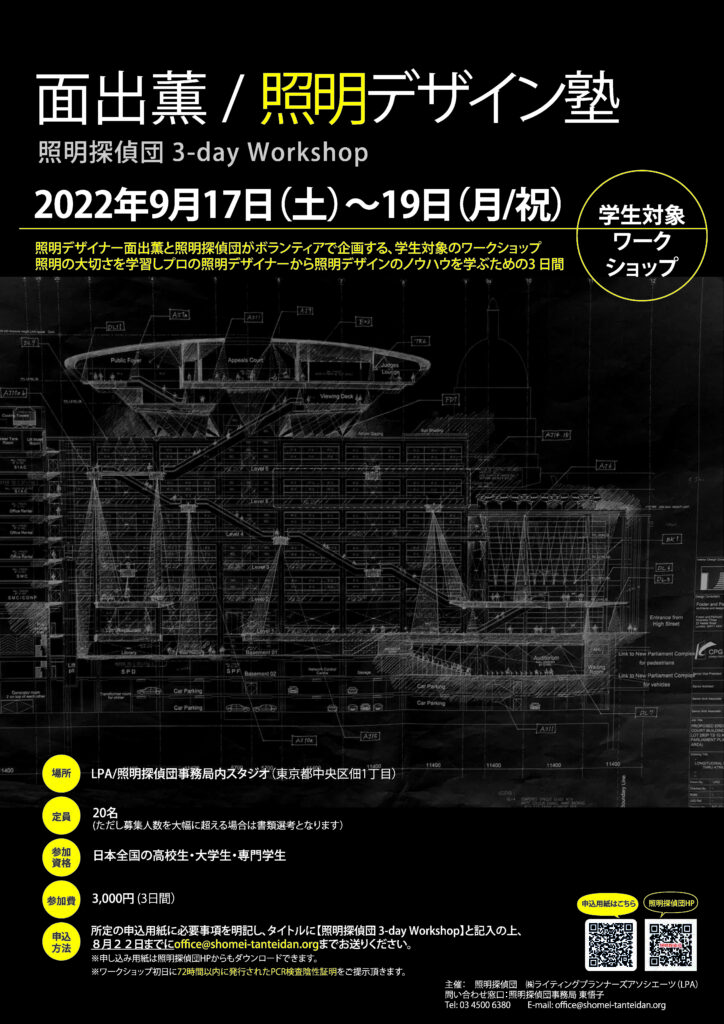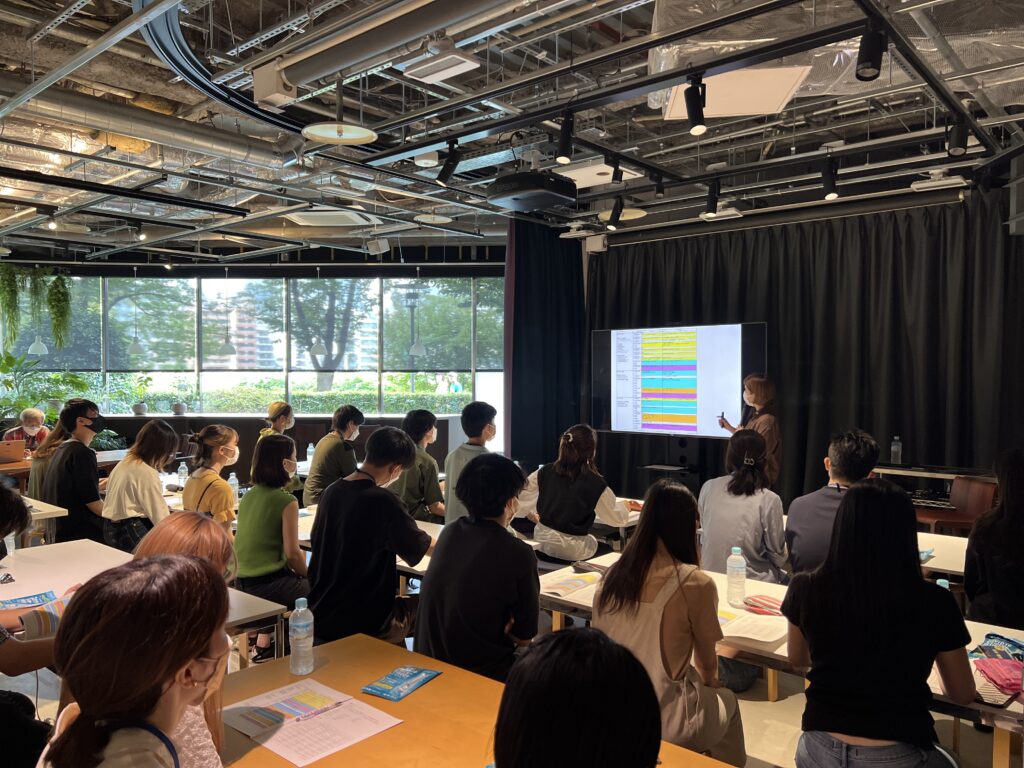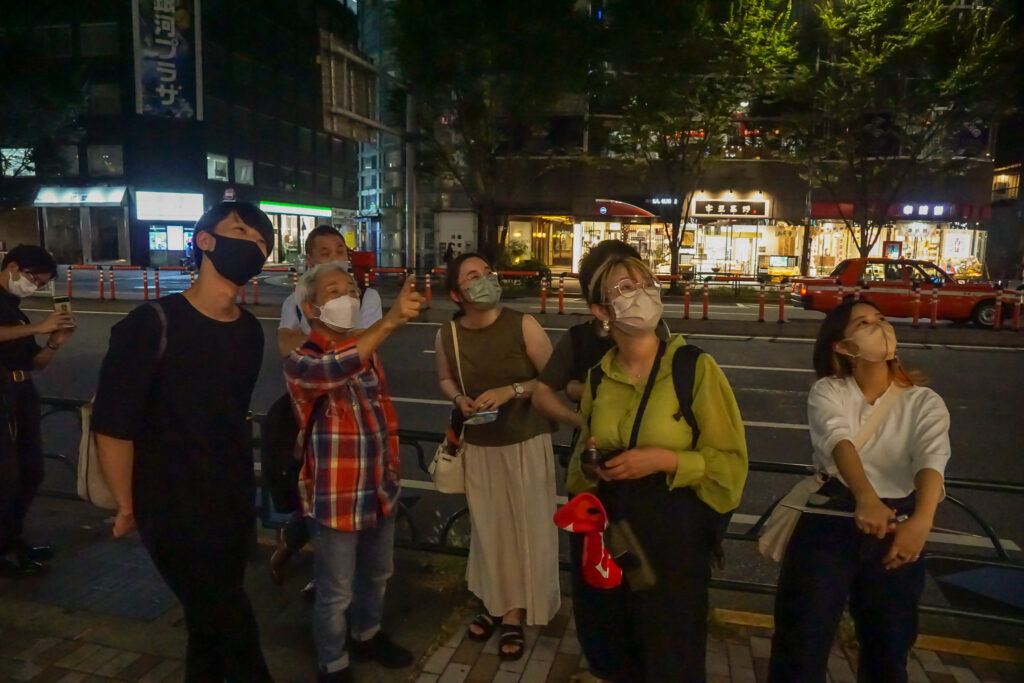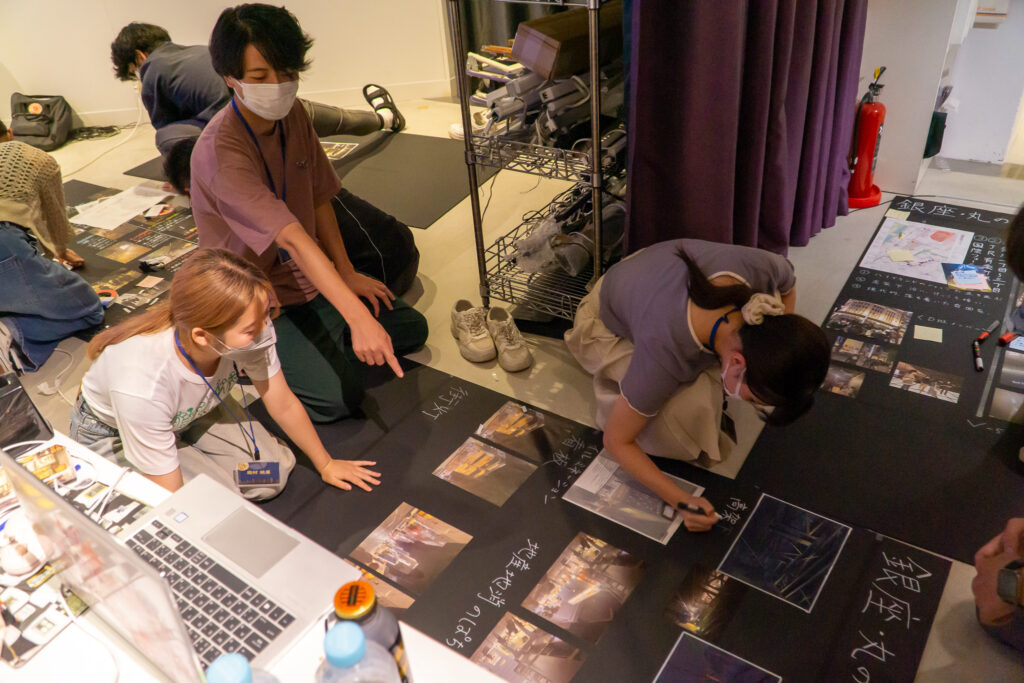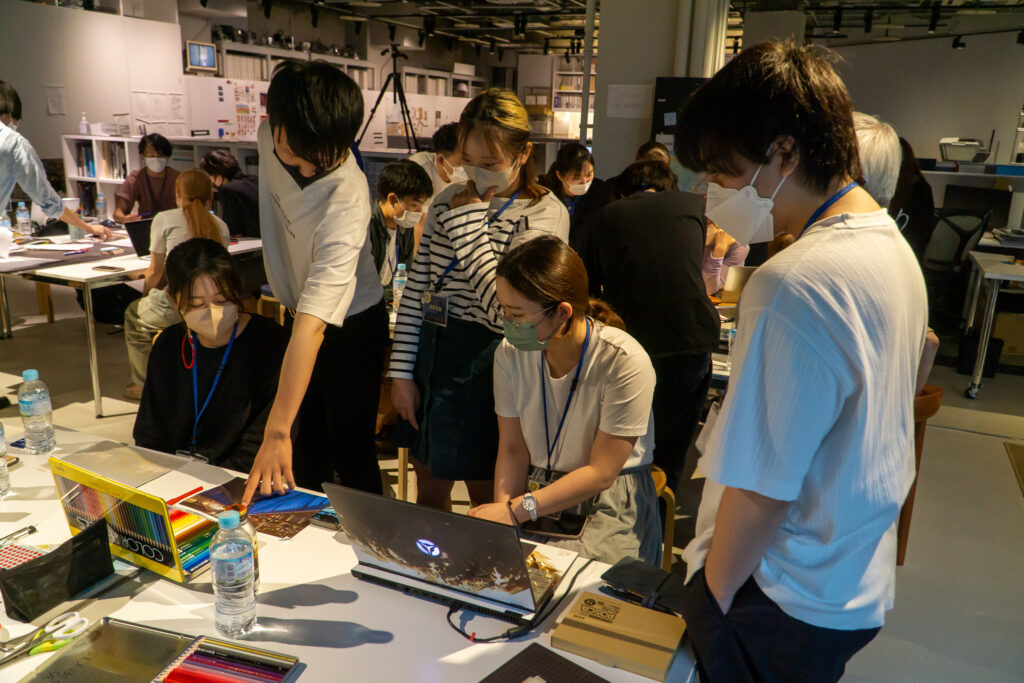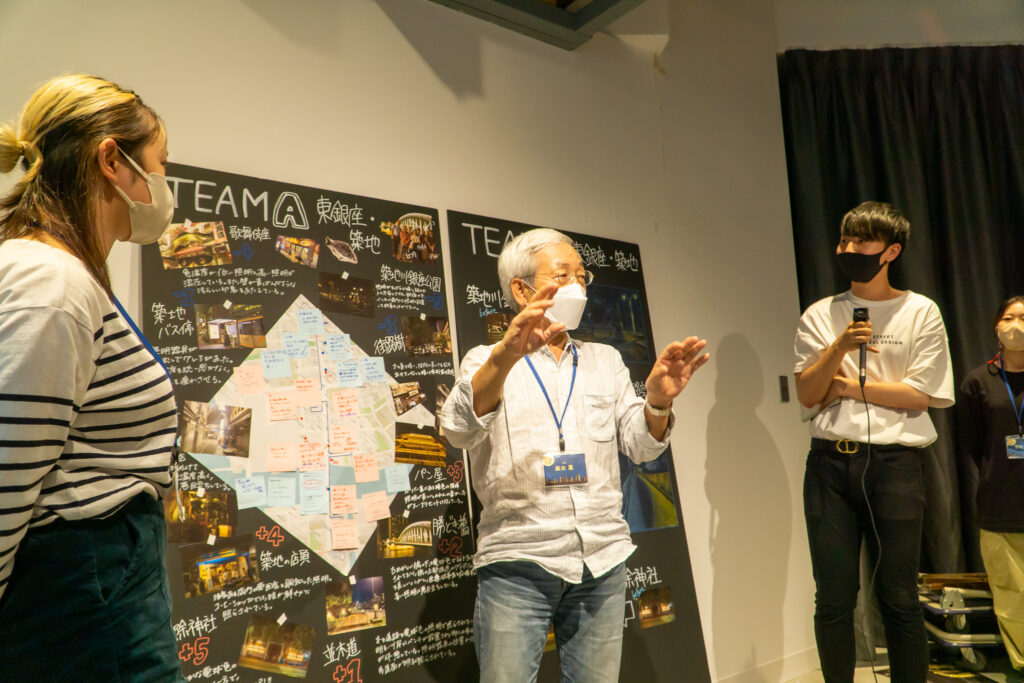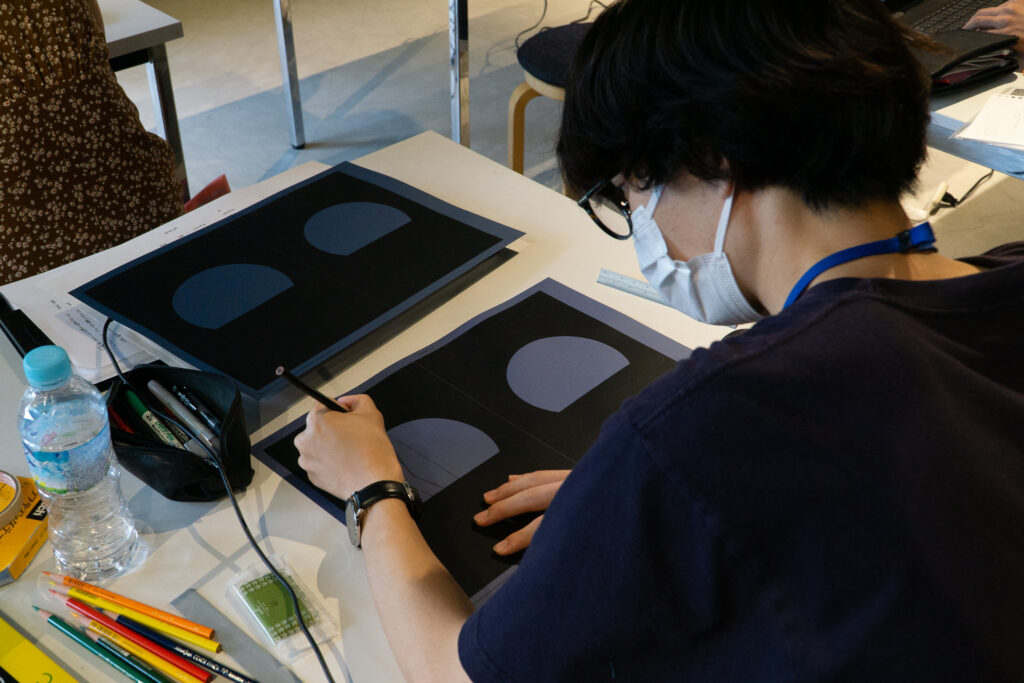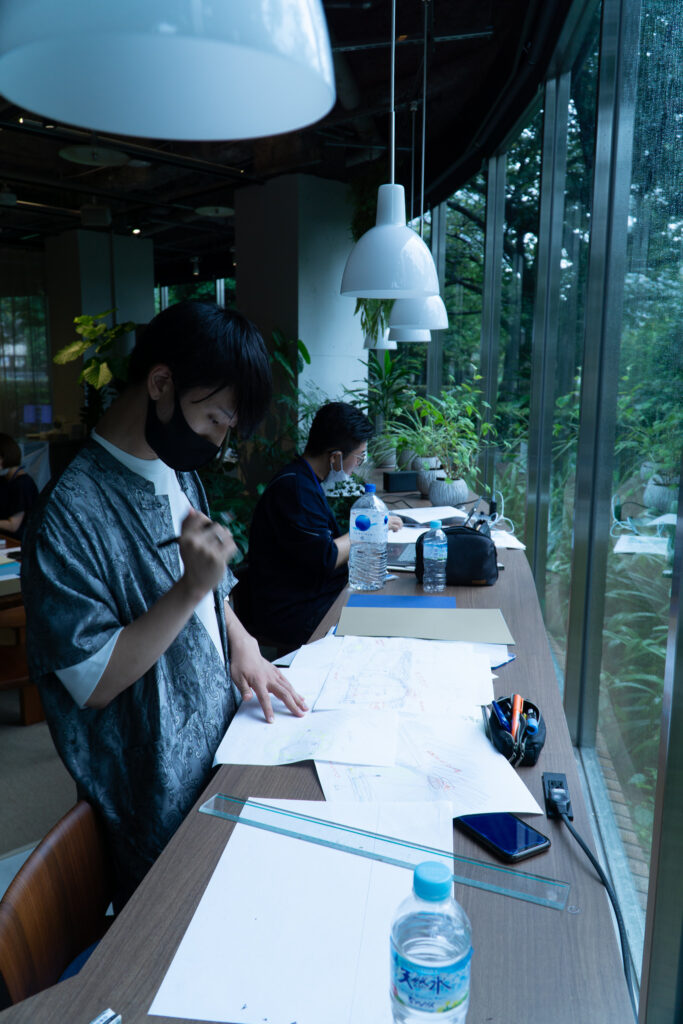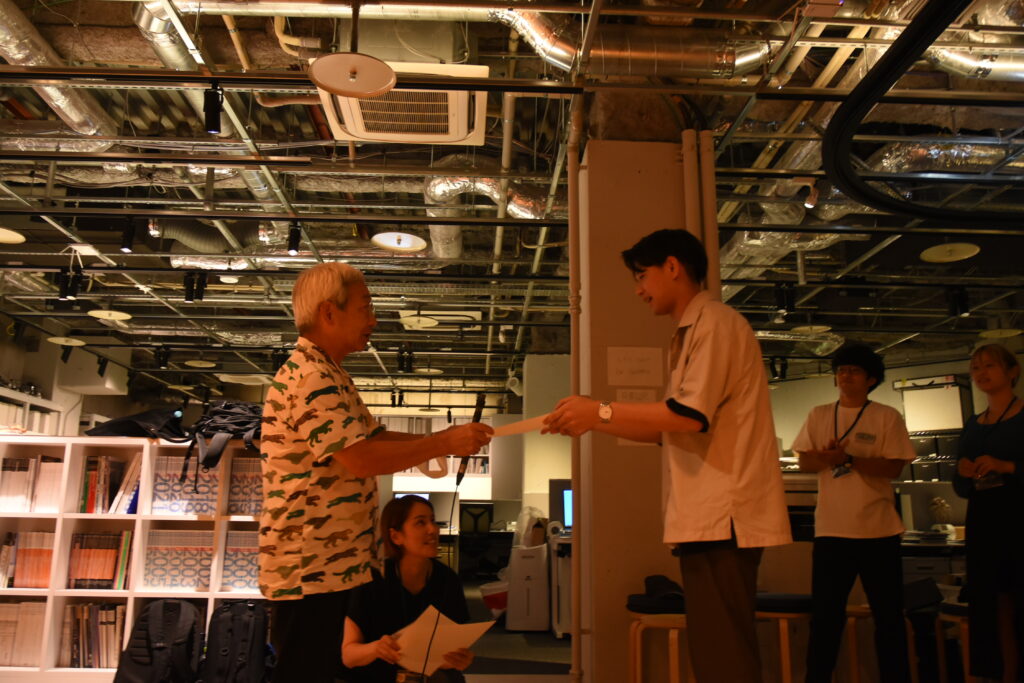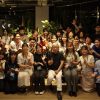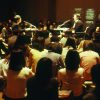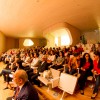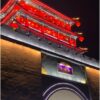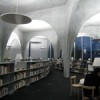3-day Student Workshop
2022.09.17-19 Noriko Higashi
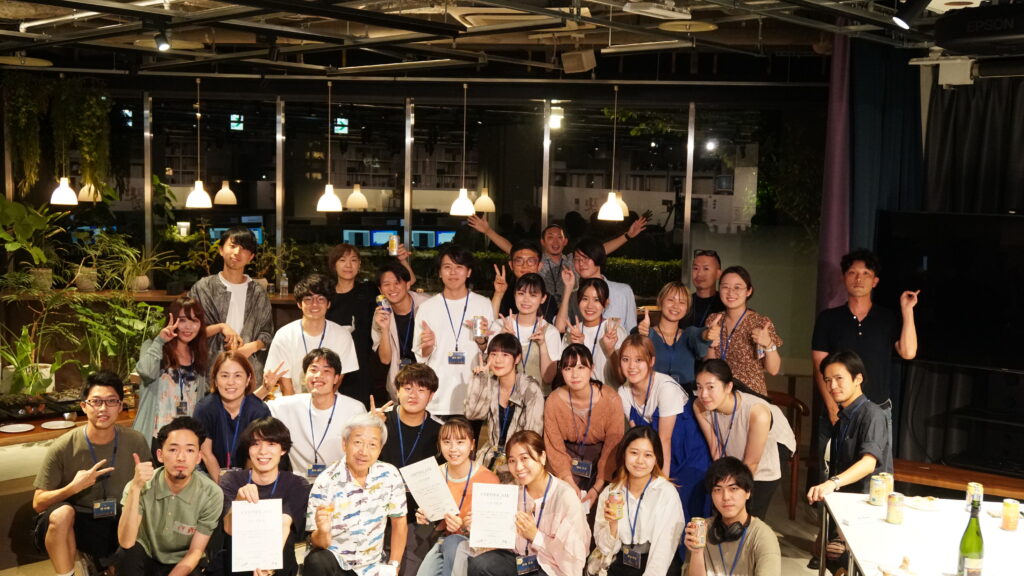
We held a three-day introductory workshop on lighting design, where professional designers from LPA shared their expertise. A total of 23 university students participated, making it a highly intensive program. Although some students were initially reserved, through city walks, group discussions, and social gatherings, they gradually built friendships, learned to respect each other’s opinions, perspectives, and styles of expression, and created a positive atmosphere that led to a fruitful experience.
While Lighting Detectives’ activities have been restricted due to COVID-19, we are even more concerned about the limited opportunities for children and students to experience things that can only be done at their age. In particular, lighting design requires going to actual sites to observe and experience lighting firsthand, which is an essential first step. We carefully considered how to conduct a workshop that could communicate the importance of lighting design and the value of firsthand experiences, even during the pandemic, and were finally able to hold it over the September holiday weekend. (Noriko Higashi)
■Purpose of the Workshop
I once taught lighting design-related courses for about ten years at several universities, including the Department of Design at Tokyo University of the Arts, the Department of Architecture at the University of Tokyo, and the Department of Spatial Design at Musashino Art University. Each school had a different depth of interest in light, which made teaching a challenge.
My own path into lighting design was, in fact, a coincidence. But as I continued along this path, I gradually came to understand the importance of lighting design as both a discipline and a profession. Now, I feel an ever-growing sense of expectation for young people who will carry the future of lighting design forward in a sound way.
This private school is like a traditional terakoya (community learning place). My intention is to pass on lofty ideas, sensibilities, and techniques to students who are deeply committed to lighting design. There is significance in a professional group like LPA volunteering their time to guide students in this field.
I am also eager to see what kind of future the students who experience this workshop will go on to create. (Kaoru Mende)
■ Day 1 – Lighting Design Lectures & Night Walk Survey Workshop
On the first day, participants attended a series of lectures on various aspects of lighting design delivered by professional lighting designers from LPA, along with two external guest speakers. In the evening, students were divided into four groups for a night walk activity.
The lectures began with Kaoru Mende’s talk “LPA and the Lighting Detectives = Lighting as Culture.” LPA staff members then gave lectures on topics including public space lighting design, urban lighting, theatrical/event lighting, and hotel lighting. We also welcomed two guest lecturers: Professor Nobuaki Ochi of Toyo University, who spoke about light pollution, and Mr. Tadashi Takao, Director of the Center for Community Power Creation Design, who spoke about the importance of nightscapes in urban development.
At night, the students explored the Ginza–Yurakucho area in four groups, following the Lighting Detectives’ method of identifying “heroes” and “villains” of light. Each group was accompanied by 2–3 LPA staff members, who guided them on how to measure illuminance, take photos, and spark discussion points during the 90-minute survey.
For many students, it was their first time walking through a city with such a strong focus on lighting. They realized that the criteria for identifying lighting heroes and villains could not be clearly defined by numbers or concepts, and that the same light could be perceived very differently by each individual. Some felt confused or overthought their judgments at first. To encourage free thinking, LPA staff avoided presenting their own evaluations, allowing the students to lead discussions and develop their own interpretations.
This approach sparked lively conversations, many fresh insights, and ultimately, an enjoyable and enlightening night walk for everyone involved.
■ Day 2 – Reflection on Night Walk Survey & Proposal Development
On the second day, students worked on analyzing the results of the night walk and creating lighting proposals, which were summarized on two presentation panels. The day concluded with group presentations.
First, each team reviewed their observations from the night walk and selected their “heroes” and “villains” of light. Discussions were lively, often taking a long time before the group could reach consensus. In many cases, so much time was spent debating the choices that less time remained for developing the actual proposals.
During the proposal-making process, LPA staff taught students methods of visualizing and expressing lighting design, which the students then used as a model. For most participants, this was their first experience creating a lighting proposal. While no radically unconventional ideas emerged, each team managed to produce a pair of panels that reflected their unique perspectives and creativity within the limited timeframe.
In the group presentations, each team used their two panels to explain their analysis of the “heroes” and “villains” they identified, the reasons behind their decisions, and their proposed lighting concepts for the area. Seeing how other groups organized their findings, framed their proposals, and delivered their presentations proved inspiring, and many students seemed to learn from each other’s approaches.
Feedback from the LPA instructors also helped students recognize both the strengths and shortcomings of their work, which served as valuable hints for the individual assignment to come on Day 3.
After the presentations, a social gathering was held to release the day’s tension. This provided an opportunity for students to mingle across groups and to converse more casually with the LPA staff members who had been guiding other teams. The evening turned into a lively and memorable exchange. (Noriko Higashi)
■ Day 3 – Individual Assignment
Participants could freely choose one of the following five topics:
- Design a lighting scheme for Katsura Imperial Villa as if it were your living space.
- Design the lighting for Le Corbusier’s Villa Savoye.
- Revitalize Asakusa (Kaminarimon Gate, Nakamise Street, Demboin Street) through light.
- Design a tea room of light.
- Propose a lighting environment for housing, underground space, or convenience stores in the year
2050.
Assignments 1–3 dealt with lighting for specific architectural or urban environments, while ④–⑤ required freer conceptual proposals.
Once the task was announced, everyone began at once. Some immediately researched and sketched, while others spent a long time deciding which assignment to choose. Using the visualization techniques they had learned the previous day, students struggled but managed to tackle their designs.
In the presentations, each student had four minutes to present their work. The results showcased a variety of personalities and yielded highly engaging proposals. The best project, as judged by Kaoru Mende, was awarded to a student who designed the lighting environment for Asakusa.
In addition to the top prize, all 23 students who completed the three days of intensive work received certificates of completion. At the end, everyone shared their reflections on the workshop. What remained afterward was a refreshing sense of exhaustion and accomplishment, like having sprinted at full speed.
Despite only two months of preparation from planning to execution, the workshop received high praise from both students and staff. The participants’ diverse backgrounds and individuality also contributed to the program’s success.
The structure of the workshop—absorbing knowledge in lectures, immediately testing it in the city, bringing observations back to group discussions, developing group proposals, and finally producing individual designs—made these three dense days highly effective for the students.
Of course, there were aspects to reconsider, such as lecture time allocation, number of participants, and venue layout. Still, for the staff, preparing clear teaching methods, walking the city with students, and engaging in discussions offered valuable insights into the students’ perspectives.
Going forward, LPA intends to continue developing this design school as an ongoing activity, with different staff members taking turns in leading and enriching the program. We sincerely encourage student members to join us again next year. (Noriko Higashi)





